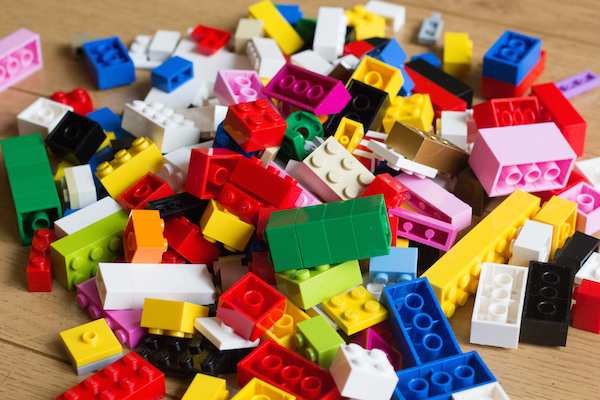
[Image above] Credit: Curtis McHale; Flickr CC BY-SA 2.0
Legos inspire some truly creative art.
But the plastic bricks aren’t solely artistic—there’s some serious scientific precision behind those little engineering marvels. So much so that Lego bricks have remained largely unchanged since 1958.
That doesn’t mean they’re perfect, though. Legos are set to soon undergo a serious material transformation, in which their composing polymer—acrylonitrile butadiene styrene—will be replaced with a more sustainable material. No simple task, apparently, since the new sustainable material will be developed with a $1 billion investment at Lego’s new Sustainable Materials Centre in Denmark.
In addition to the materials science of Legos themselves, Lego Ideas, the company’s platform for crowd-sourced ideas for new Lego sets, has ventured into the materials science and engineering world.
The Materials Science and Engineering idea—which, if it gathers enough support, could become available as a Lego set—features the equipment used to explore the nanoscale world: SEM, TEM, and XRD.
Credit: Lego Ideas
According to the Idea website, “The goal of this Lego project is to provide a fun way for students of all ages to learn about Materials Science and Engineering and the instruments which reveal the world hidden from human eyes. The development of new materials has enabled technological breakthroughs that impact and improve our daily lives; consumer electronics like the tablet or smart phone, life-saving biomaterials such as stents and artificial heart valves, higher performance and more efficient airplanes and cars, and alternative energy solutions like biological fuel cells or more efficient solar (photovoltaic) cells.”
Created by Lego user Brick Lab, a Boise State University graduate named Chris, the set is currently gathering support on Lego’s Ideas website. There, ideas that gather 10,000 votes of confidence from supporters are qualified for an official Lego review to potentially become a real for-sale Lego set. The idea has ~500 supporters so far, with more than eight months left to gather support.
Although not all supported ideas go into production, the Lego Review Board—which includes “designers, product managers, and other key team members”—says that each reviewed idea gets a fair shot to enter into the big leagues of Lego world.
If you like the idea of sharing your love for nanoscale techniques, sign up for a free Lego user ID and vote!

